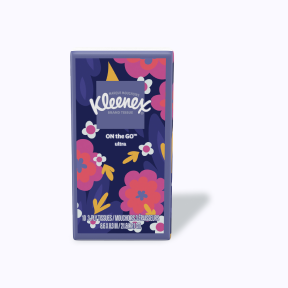
It’s true - weather is often the subject of small talk. And when you think about it, it’s no surprise; its unpredictability provides us with endless conversation starters. Either it’s too hot, too cold, or too wet.
With so much uncertainty in weather, allergy sufferers may wonder if the weather actually impacts symptoms. And the answer is it absolutely does.
Whether it’s sunny, soggy or stormy, we’re here to help you with information and tips on how to navigate weather allergies.
1. Sunny weather
-
Think about what you’re wearing.
There are plenty of accessories you can wear that help prevent pollen, dander, and other airborne allergens from reaching your face, eyes, and hair, such as hats and wraparound sunglasses.
-
Shower and change clothes when you come in from working or enjoying time outside.
Cleaning up soon after exposure to pollen can help remove irritants from your skin, lessening the chance of reaction.
-
Pick the best time to go outside.
The general rule of thumb is that the count goes up in early mornings and evenings, no matter how hot it is.

Inevitably, pollen allergies are associated with summer. The first warm, sunny days of the year always bring the same tough question for those who suffer. Do I head outside to the park or the backyard to enjoy the sunshine, despite knowing I could be crying and sniveling within half an hour of leaving the house?
While the US pollen season starts in March, most allergy sufferers experience their most severe symptoms from May to August. That’s because the warmer, sunny weather brings higher levels of grass pollen, which 90% of allergy sufferers are allergic too.
To make matters worse, the optimum conditions for high pollen counts are when its warm, humid and windy, which is often when there is a sudden change in weather and rain is followed by warm weather (sound familiar?). This is because the rain encourages the grass to grow, and the warm weather then disperses the pollen
What can I do to deal with seasonal allergies in summer?
2. Damp weather
-
While warm, dry weather can lead to higher grass pollen counts, rain and damp conditions often lead to increased levels of airborne mold spores, and yes you guessed it, they can trigger allergy symptoms too! Typically, woodland areas, forests and gardens harbor fungi that produce such spores, while they can also be found indoors on house dust, ripe fruit and house plant soil.
And how can I deal with it?
The best thing you can do is to keep the humidity levels in the home as low as possible. Use a dehumidifier and avoid drying your clothes inside.
3. Stormy weather
-
Rainy, stormy days can also trigger allergy symptoms, leaving some sufferers wondering if it’s rain they’re allergic to! Named ‘Thunderstorm Asthma’, this is because high winds caused by storms draw pollen and pollution particles into the air, then they become wet and break down into smaller particles that are released back into the air. These smaller particles are then especially prone to trigger allergy symptoms, as due to their size they can get much deeper into airways in the lungs.





